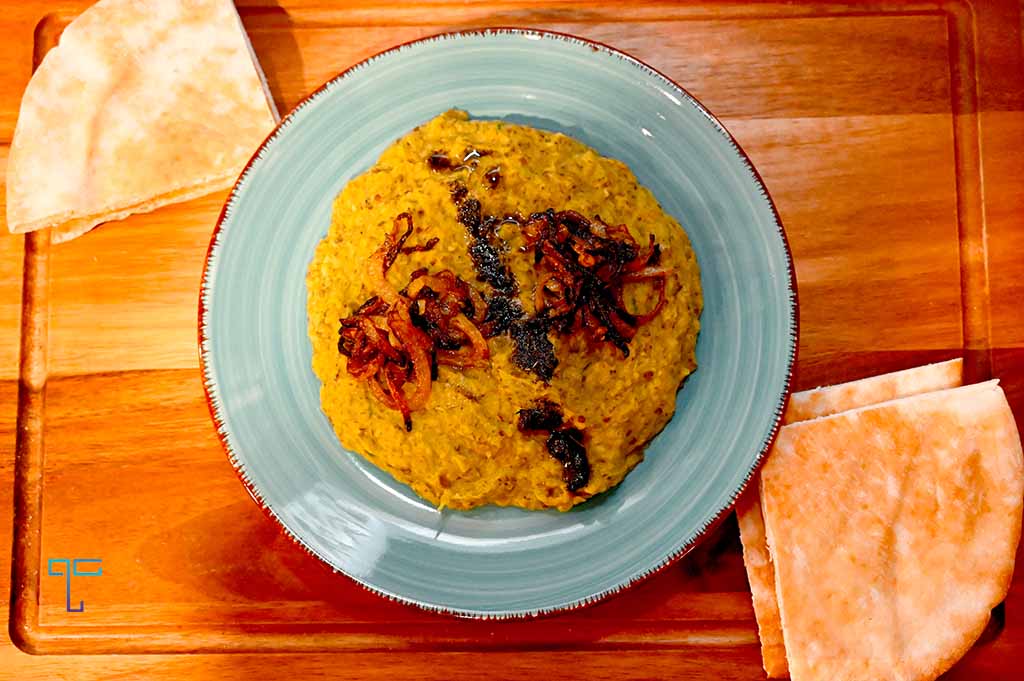Thai Panang Curry

Wanting to make things a little easy on myself, I was originally planning to use the pre-made Panang curry paste. But to my surprise, the paste has shrimp in it. I made a few adjustments, that made for an amazing Thai Panang curry with a bit of a kick to it.
To get started, let’s make the paste.

Depending on how spicy you like, I would adjust the amount of dried chilies. I wanted the curry to be on the mild side so I used 4-5 chilies. For the paste you will need:
- 4-7 Dried chilies
- 1 tsp coarse sea salt
- 3/4 tsp cumin seeds
- 1.5 tsp coriander seeds
- 1/4 tsp of peppercorns
- 1 tsp grated ginger
- 1/4 cup cilantro
- 1/4 cup chopped shallots
- 4-5 roasted almonds
- 1 tsp fresh grated turmeric
- 1/2 tbsp brown sugar
I placed everything in the nutribullet and let it grind down into a paste. Typically, this recipe doesn’t call for sugar or turmeric, but I am a huge fan of fresh turmeric. The flavor balances the curry pretty well and in spicy dishes, I find that adding a little sugar elevates the dish. For the paste, in most cases, peanuts are used in place of almonds. To my surprise almonds worked well with this dish and I would highly recommend using lightly salted roasted almonds over peanuts. Now that the paste is ready, we can move on to making the curry.
Now on to the fun part, making the curry. For this next part you will need:
- 1/2 red bell pepper
- 2 medium carrots
- 1/2 yellow bell pepper
- 12 oz extra firm tofu
- 1 can of coconut milk
Start by adding 1 can of coconut milk to a pot and bring it to a simmer. Then add all of the panang curry paste from the previous step.

Using a whisk or wooden spoon, thoroughly mix the panang paste with the coconut milk and allow it to come to a simmer. While the mixing is coming to temperature thinly slice the bell peppers and carrots. I wanted my tofu to have bigger chunks so I cut the tofu into 1/2 inch cubes.

To make the dish more colorful, you can add any of your favorite veggies. Mix in the veggies and let it cook for 10-15 minutes or until the carrots are cooked evenly. While the curry is cooking this is the perfect time to cook your rice. I usually have basmati rice around, alternatively, jasmine or brown rice could be used.
Cooking basmati rice is pretty straightforward. To shave a little time off of the process, I will use my electric kettle to boil some water. While it is boiling, I will add some salt to a pot and measure out 1-2 cups of rice. Then add the water to the rice. Add an excess of water, and check the rice as it cooks. As you see the grains are getting larger and it looks as though the rice is almost cooked. You will want to strain the rice and wash off any starch. Next, I finely chopped up 1 bunch of cilantro and placed the rice back into the pot while mixing in the cilantro. Usually, I will add 1 tbsp of olive oil to the rice and allow it to finish cooking with the lid on under low heat. As the rice is almost done cooking, let’s check back on the Panang curry. At this point, the carrots should be a little crunchy and cooked.

Put the rice on the plate and garnish your curry with some Thai Basil.




0 Comments